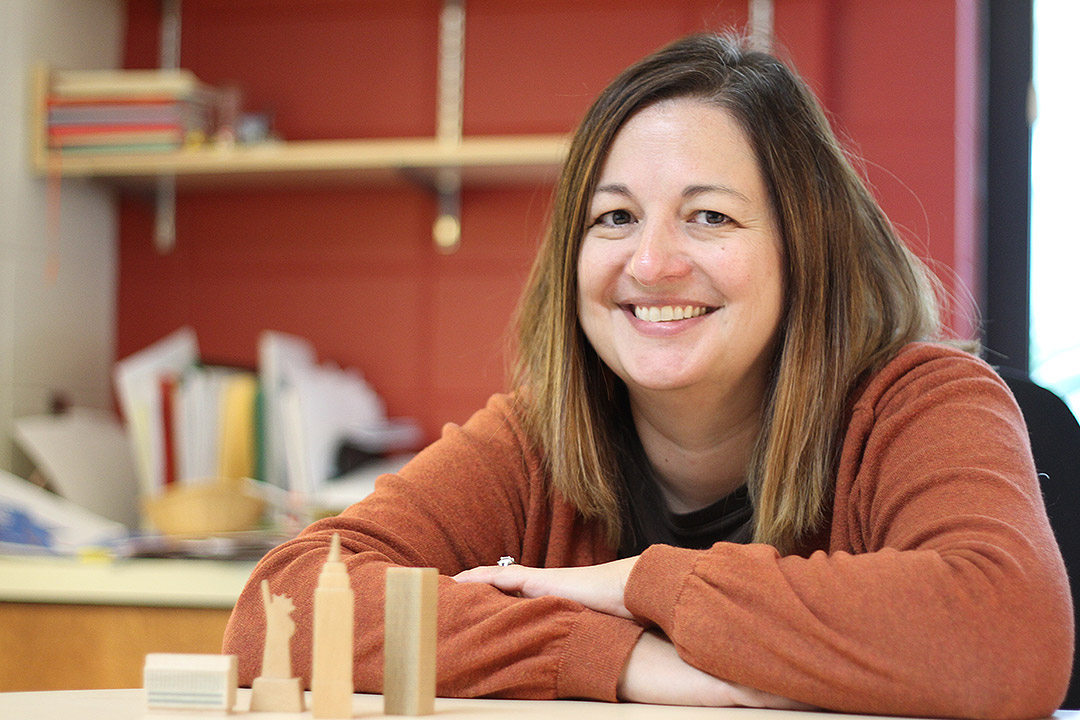
Alum’s journey comes full circle
When Melanie Wilkinson moved from small-town Saskatchewan to a teaching job in New York City, she expected a certain amount of complications as she settled into her new surroundings.
By HenryTye GlazebrookWhat she didn’t expect, unpacking her bags in August of 2001, was the World Trade Center terrorist attack that would rock her new home less than a month later.
“When the first plane hit, I remember it was announced on the intercom,” she recalled. “Some students even saw it. I remember thinking it sounded so weird. How could something like that happen in the middle of the city?
“We ended up seeing the second (tower) being hit from our classroom. We sat looking out the window pretty much all day watching it unfold. We were on lockdown.”
Wilkinson is now the field experiences co-ordinator in the College of Education at the University of Saskatchewan, but her journey to that role is a winding road from undergraduate uncertainty to job security, with curves through quiet Saskatchewan hamlets and the Big Apple in-between.
She never saw herself as a teacher to begin with, and only sought out her education degree at the U of S as a stepping stone to other paths. But once the internship part of her program began, Wilkinson was hooked.
“I loved the work of it and the creative piece of it—working with students, working with people,” she said. “I felt like it gave me everything. It was rigorous, it was challenging. It felt like a job that had everything that I wanted.”
After graduating, while so many of her peers were trying to find jobs in larger city centres, Wilkinson snatched up an opportunity to return closer to her Prince Albert roots.
She took a full-time position in the nearby town of Kinistino, a small community of barely 1,000 people, and fondly recalls the four years she spent banding together with her colleagues in a cohort not too dissimilar from the one she’d known in university.
“Working in a small community is a wonderful way to start your career,” she said. “Everyone’s kind of in it together. I remember staying after school, going home for supper and then our group of teachers would go back to do a little work and play in the gym.”
While they enjoyed their time there, Wilkinson and her husband were soon ready for another challenge, and found themselves making the major adjustment from life in small-town Saskatchewan to one of the world’s biggest cities. She caught a lucky break, becoming one of the first people brought in under a new push for international hiring by the New York City Board of Education, landing an interview before recruiters had even started the job fair circuit.
But less than a month later, Sept. 11 changed everything.
“I remember walking, my husband and I, and burnt papers were falling on our feet from all that happened,” Wilkinson said. “We were right by the river, by the Brooklyn Bridge, and police cars and fire trucks were stopped, covered in soot. It was everywhere. It was like a war zone.”
Even her usually raucous classes, filled with inner-city high school students, were suddenly subdued.
“They weren’t showing that they were scared, but everyone was just quiet,” she said. “For the whole next week or two … it was like eight million people in silence, in mourning.”
An attack of such terrifying magnitude could have easily scared away recent arrivals, but Wilkinson and her husband dug in deeper, finding a shared sense of communal warmth and safety in the neighbours, colleagues, students—even strangers—that they walked shoulder-to-shoulder with through packed city streets.
“It’s weird to explain, but I think the majority of people still felt safe,” she said. “Things can happen, but it wasn’t like we ran scared. My husband and I never blinked once about not staying. It was our home.
“A lot of people do have roots there, but a lot of others don’t. So then the community and your neighbours become your family. I found a real sense of community there.”
Twelve years passed before Wilkinson and her family returned to Canada, tired of the daily grind and ready once again for a slower pace.
She expected to find another job teaching, but instead found a welcome role with her alma mater helping new generations of U of S students enter the exciting field of education, fresh-faced and unaware of the possibilities their degree might unlock for them.
“It was a job that I never even knew existed, but it has everything to do with being involved with schools—and then it’s also different, being involved at a bit of a different level, where I’m exposed to so many different classrooms, schools and areas,” she said. “I’ve loved it.”
HenryTye Glazebrook is a freelance writer and former U of S communications co-ordinator.

